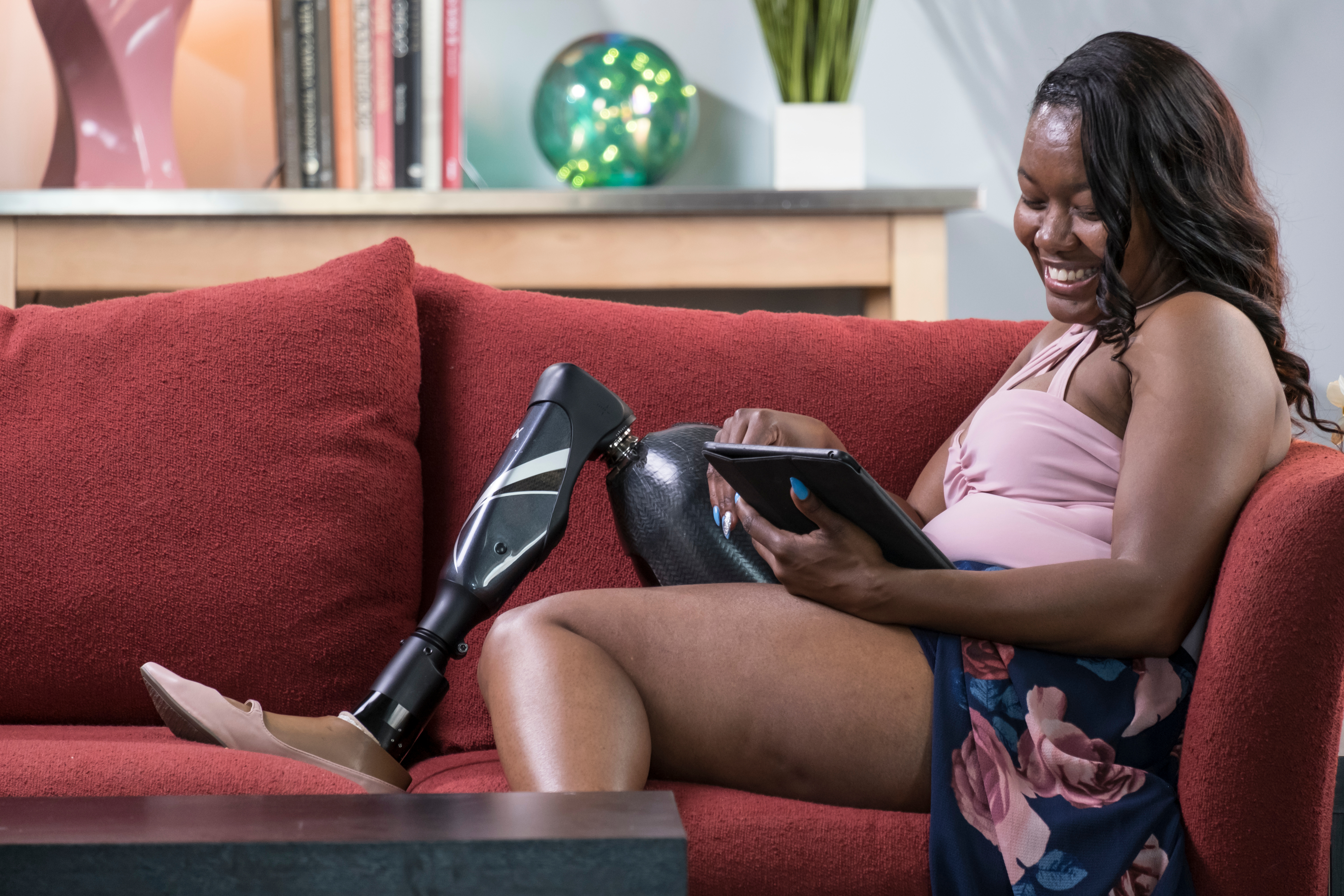Written by TMRnerve.com Staff

Even before the COVID pandemic, people with limb loss had challenges getting to and from doctor’s appointments. Considering the range of specialists involved after an amputation occurs, lack of mobility simply cannot become a barrier to care. Physiatrist Danielle Melton, M.D. says that’s why she saw the silver lining in COVID. “Telehealth appointments became the norm for many who could not attend appointments in person,” shares Melton.
She thinks it’s here to stay: “The horse is out of the gate. Most insurance coverage now is counting these as regular visits, so people and providers don’t have to worry about cost,” adds Melton. Getting to a doctor during COVID is a risky option, particularly for amputees, many of whom are at high risk for infection and have mobility problems, so telehealth is particularly important.
Amputees who are veterans have long been able to take advantage of services through the Veterans Administration (VA), a leader in providing telehealth appointments for an array of specialty medical care. Dr. Melton cites VA hospitals as the clinical model for telehealth for their understanding of patients’ potential transportation restrictions.
Telehealth Connects Specialists
Telehealth for amputees allows the patient to assert control of care and potentially have multiple specialists addressing concerns all in one visit, as opposed to traveling to appointments with different specialists.
For amputees living in rural or remote areas, telehealth is critical. Because limb loss involves so many different specialists for initial and ongoing care, telehealth can go beyond receiving a call or video appointment in an individual’s home to address the various issues affecting amputees, including pain. And integral to pain management after amputation surgery is understanding its origin.
Pain can come from a variety of sources: nerves, tissue or bone healing or from an ill-fitting prosthesis. It might have different names to different patients. Is it residual limb/localized pain? Phantom limb pain? Neuroma pain? When injured, nerves attempt to regenerate and reconnect; in an amputation, though, nerves have nowhere to reconnect to, resulting in neuromas, which can cause pain.
Now, determining the cause of pain can be done through telehealth when the patient is, for example, at the prothesist’s office. A doctor can examine the amputee with assistance from the prosthetist to conduct certain tests and evaluate the pain source. Once the source of the pain is identified, she may refer the patient to a specialist for pain management or surgical pain relief interventions, such as targeted muscle reinnervation (TMR). In other instances, the patient may be with a physical therapist and need to consult with psychiatry to address the distress accompanying the grueling work of rehabilitation
Access to Care is a Team Approach
When looking at ideal access to care for amputees, it must be a team approach. A telemedicine check-in could occur with the physical therapist, prosthetist, occupational therapist, surgeon, or with the whole team. This gives the patient well-rounded care.
Dr. Melton has long talked about amputees having access to care. “There is a mechanism in place. Assuming the patient has a smartphone or a computer, we can reach them. Medicare now says we can use a regular visit code for telehealth - all the major insurance carriers have followed suit,” says Melton.
There are still some logistical difficulties. For example, there are Wi-Fi and broadband access issues in remote areas. Older populations have trouble with the technology in general. But help is out there. Anyone struggling to get connected with resources should look to the Amputee Coalition, an organization working to ensure that no amputee feels alone through pre- and post-amputation and recovery.
In the aftermath of amputation, there are enough obstacles to navigate, and COVID had no small impact. Fortunately, an unanticipated benefit of the pandemic is the prevalence and coverage of telehealth. Access to care has never been easier, especially for those with limb loss.
TMR can make a difference for amputee patients through improved prosthesis control and pain relief. If you’re interested in learning more, find a doctor who performs the procedure here.
Written by TMRnerve.com Staff
Targeted Muscle Reinnervation (TMR) is a surgical treatment that is gaining acceptance for nerve pain associated with amputation.
TMR is not a treatment option for patients with spinal cord injuries, brachial plexus injuries, or who are generally not healthy enough for surgery. The procedure does present typical risks of surgery. Patients may experience a temporary increase in pain as part of the nerve healing process. Your physician will help you determine whether TMR is right for you.
Gregory Dumanian, MD, is medical director of TMRnerve.com. He is a paid consultant of Checkpoint Surgical, Inc.
Copyright Checkpoint Surgical, Inc. 2025 Privacy Policy